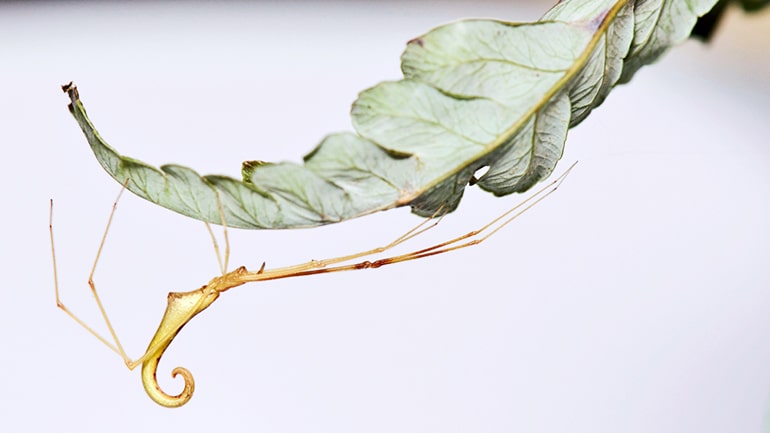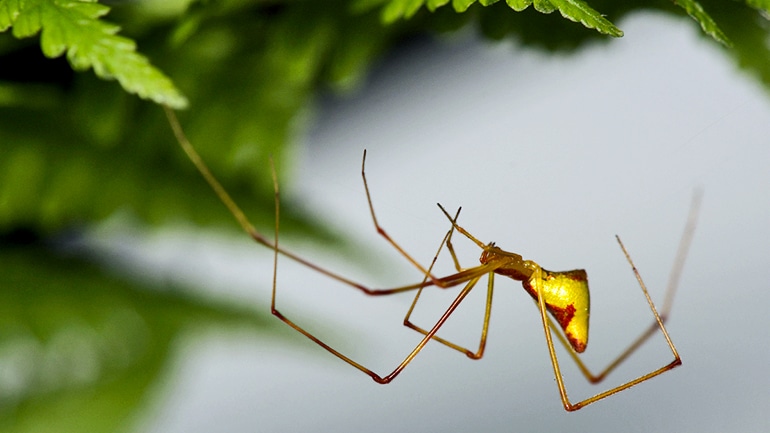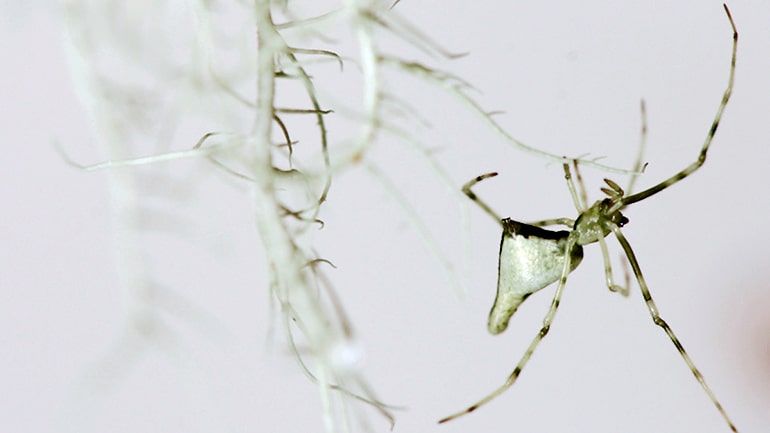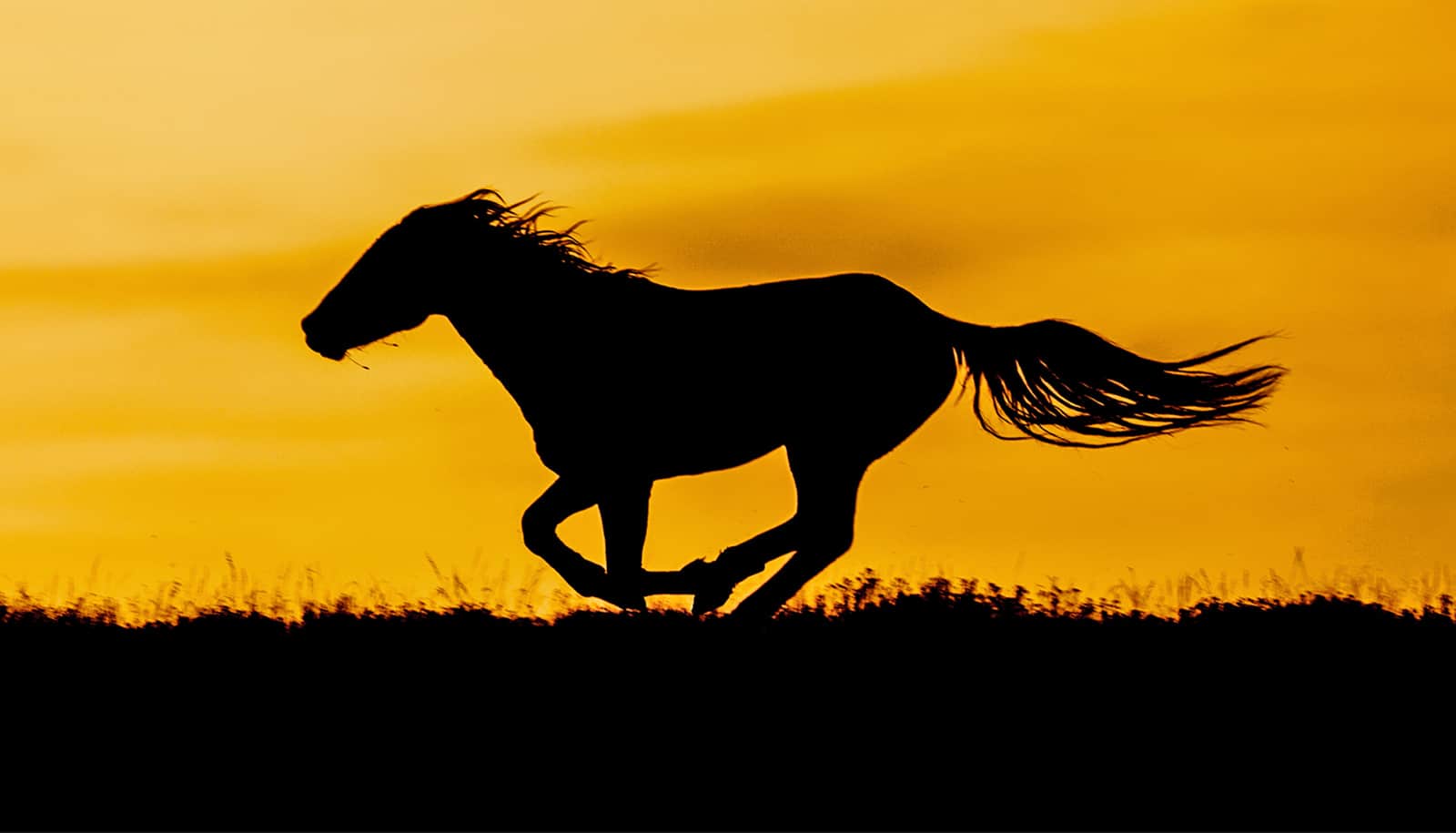New research examines how stick spiders living on Hawaiian islands are an example of “adaptive radiation” and sheds light on how evolution happens.
About 2 to 3 million years ago, a group of spiders from parts unknown let out long silk threads into the wind and set sail, so to speak, across the Pacific Ocean to Hawaii.
The spiders were parasites of other spiders, invading their webs and snipping threads to steal insects that had been caught. But there weren’t many webs to rob on Hawaii when they arrived.
So they expanded their repertoire, looking for other ways to survive by trapping and eating other spiders. A new species evolved from those first spiders, after finding a way to live on rocks. And then another species evolved to live under leaves. And then another. And then 11 more species.

Charles Darwin first noted this phenomenon, called adaptive radiation, in the beaks of finches of the Galapagos Islands. His study of the finches’ diversity led to his theory of evolution by natural selection. Yet today, much remains unknown about how adaptive radiation, and thus evolution, actually works. Hawaii is even more of a hotbed for biological diversification than the Galapagos due to its isolation.
In Hawaiian Ariamnes stick spiders, adaptive radiation has resulted in 14 species now living across Hawaii. They share a generally similar body type, but each is a separate species with distinct physical traits.
Remarkably, stick spiders with similar traits—yellow and red coloring, for example—live on different Hawaiian islands but aren’t each other’s closest relatives. It’s a rare instance where a physical form has evolved separately on each island, a new study suggests.
The study, which appears in Current Biology, show that evolution has led to a predictable and independently evolved set of similar forms in spiders on each island.

“This very predictable repeated evolution of the same forms is fascinating because it sheds light on how evolution actually happens,” says Rosemary Gillespie, a professor of systematic entomology at the University of California, Berkeley and lead author of the paper. “Such outstanding predictability is rare and is only found in a few other organisms that similarly move around the vegetation.”
“This study provides insights into a fundamental question about the origins of biodiversity, but also presents a remarkable story that can call attention to the need for conserving nature in all of its forms,” says coauthor George Roderick, professor and chair of the department of environmental science policy and management.
Hawaii is a chain of islands that formed chronologically, so the scientists were able to study the spiders’ adaptive radiations over time as they moved from old to new islands. The oldest island, Kauai, was formed 5 million years ago, followed by Oahu, Molokai, Lanai, Maui, and finally the big island of Hawaii, the youngest at less than 1 million years old.

Stick spiders have evolved and differentiated from a single species on the same island, the study found. So, spider types on any one island were generally more closely related to very different looking spiders on the same island than to spiders that looked the same on other islands. For instance, a white spider on Oahu is a closer relative to the brown spider on the same island than it is to a white spider on Maui.
“You can find these spiders in pretty much every habitat on each island,” Gillespie says. “This really detailed and finely tuned repetition of evolution of the same form is really quite uncommon.”
Spiders debunk the ‘Great Man Theory’
The spiders can be grouped into three distinct ecological types, called ecomorphs: A brown one that lives in rocks, a gold one that lives in under leaves, and a white one that’s a matte color and lives on lichen.
The analysis of stick spiders mirrors Gillespie’s previous discovery in Hawaiian Tetragnatha spiders, another group that shows remarkable adaptive radiation. This group of spiny-legged spiders doesn’t spin a web and has repeatedly evolved similar ecomorphs since its ancestor arrived in Hawaii.
The varied habitat types on the Hawaiian Islands, cold and wet areas closely juxtaposed with hot and dry, have provided a rich tapestry of species diversity. The flip side of such extraordinary diversity that evolved in isolation is its vulnerability to change and to invasive species that are now flooding in as a result of human traffic, Gillespie says.
“We need to be able to figure out this diversity and document it and describe what’s so special about it, so that people know about it. It’s being lost and it’s a desperate situation.”
Evolution’s winning groups have these 3 traits
The National Science Foundation and the William M. and Esther G. Schlinger Foundation funded the work.
Source: UC Berkeley



